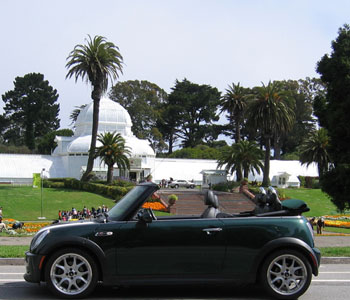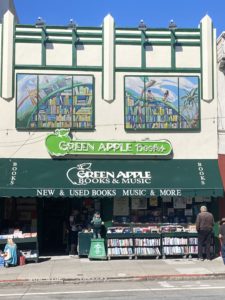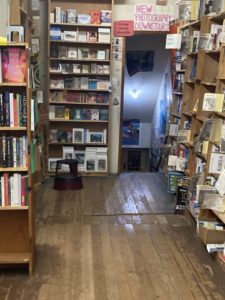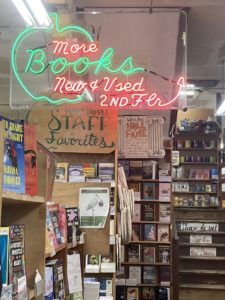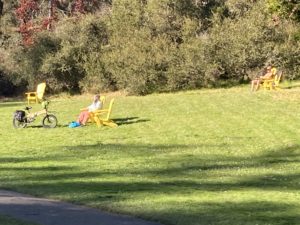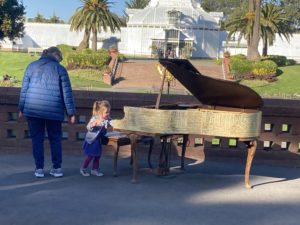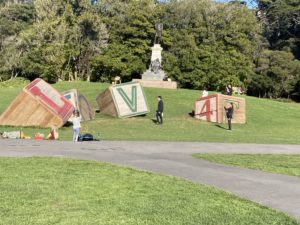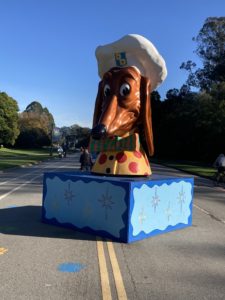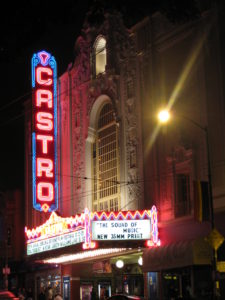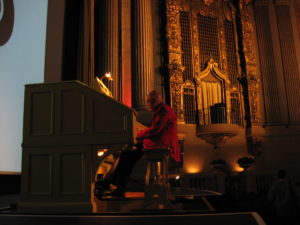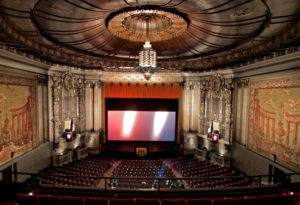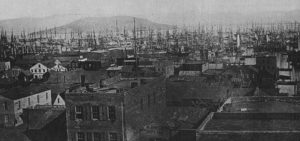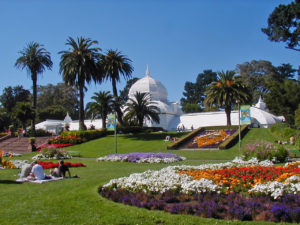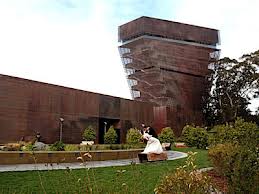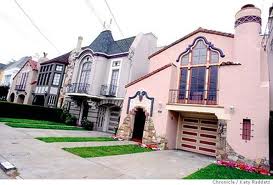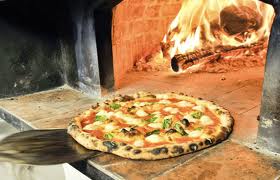Pinball in the Haight Ashbury
One of the benefits of walking a city is discovery. I’m not claiming this as a great insight, as it is a trope of most travel writers. And while it may be a cliche, it is also a fact, and one, sadly, that most visitors ignore in a mad dash to check off as many sites as possible.
Even in San Francisco, a city I’ve lived in for all of my adult life, I’m grateful I can still find something unexpected and new.
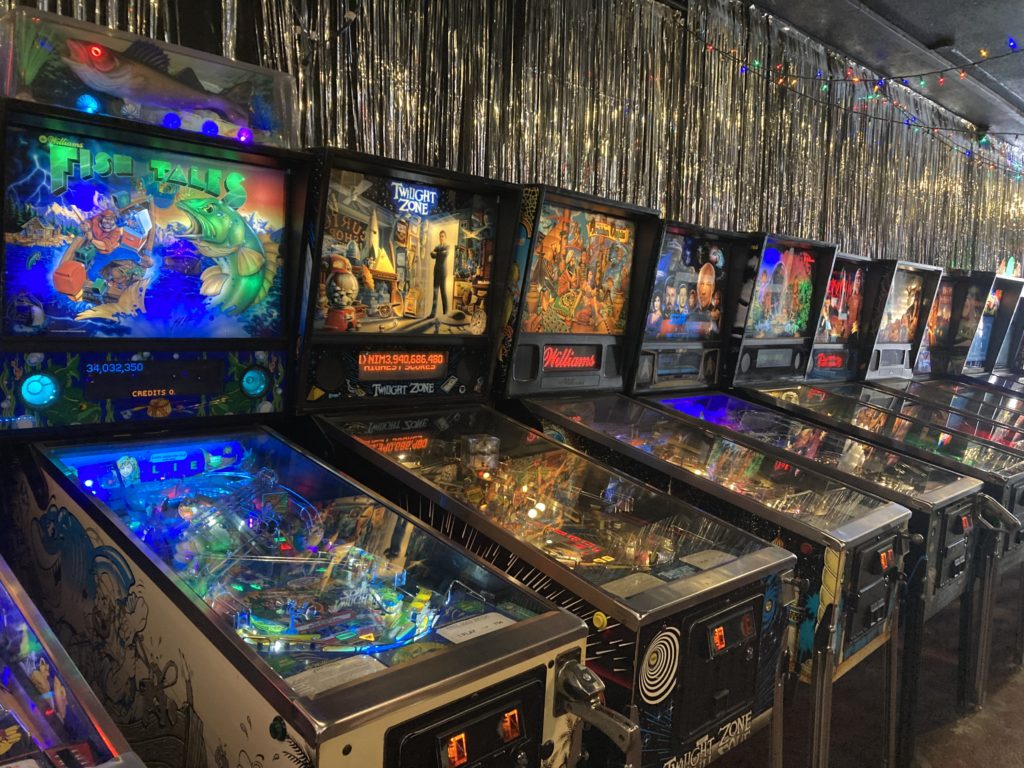
In this case–pinball. I was out walking several months ago and took a turn down a street I usually pass on my way to Haight St. And there I found a pinball parlor.
A fair amount of my youth was spent spending my allowance and newspaper route money on pinball. I got pretty good. Not hustler good, but skilled enough for a satisfying frequency of winning free games.
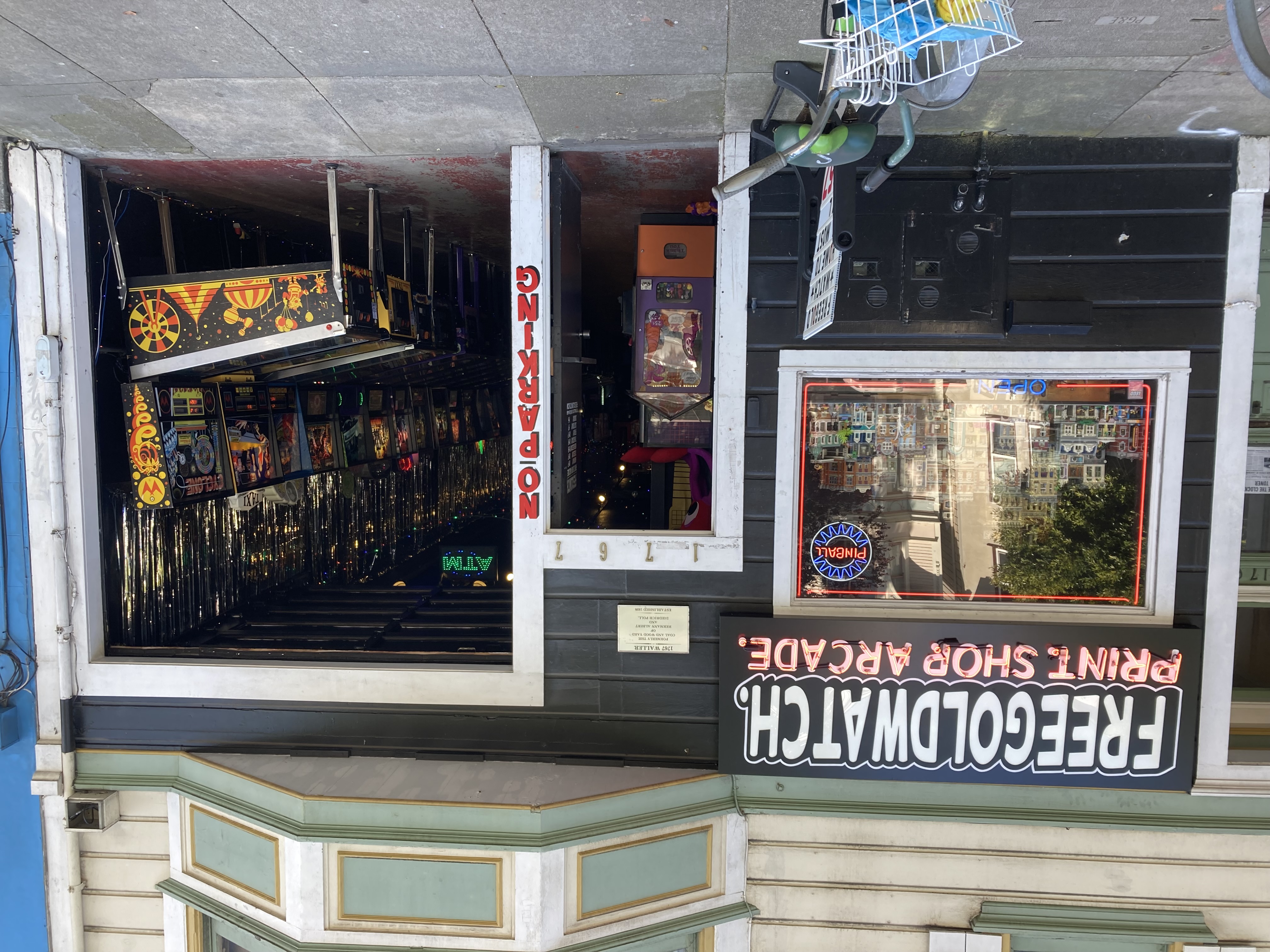
Free Gold Watch (yes, that’s the name) is located a block away from Haight St, and across the street from Golden Gate Park, and 5 blocks away from InoVino, my regular Friday night wine bar.
There are a variety of machines, but my favorites are in a room devoted to vintage games. The older machines are not overloaded with lights, bells, whistles, and traps like the newer models, and the angles aren’t as steep.
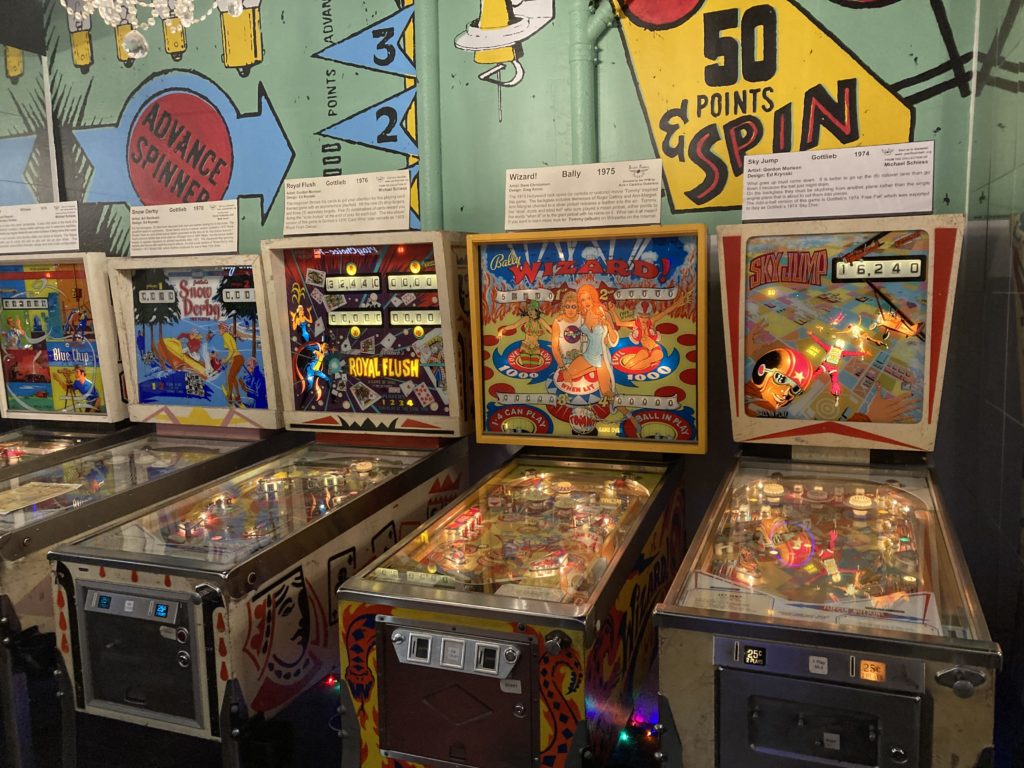
Fun for the whole family. If you have kids who haven’t played pinball, this is a good opportunity to introduce them to a possibly lifelong habit.
Stroll like a local–art, pianos, chairs, giant Doggie Diner heads, and no cars on JFK Drive in Golden Gate Park
JFK Drive in Golden Gate park was car-free on the weekends for years. The pandemic hit in March of 2020 and access to indoor public space was rightfully curtailed (It was necessary to fight the spread of Covid. Sorry if you believe otherwise. Stop listening to Fox News, especially Tucker Carlson. He looks like someone who smelled a monkey fart and is wrestling with the choice to leave the room or kiss the monkey’s butt. Why would you take seriously someone conflicted about monkey farts? But I digress) JFK Drive was closed to cars to create more outdoor public space. Then there was a vote to keep it closed to car traffic permanently or just the weekends. Thankfully, in spite of a lot of yammering from those who cling to their car mobility as a scared right (this coming from someone who makes their living driving), JFK drive is now closed to cars.
The result is a new public promenade inviting skaters, cyclists, walkers, and families to stroll among public art installations, sit in one the abundant yellow Adirondack chairs along the way.
JFK drive is the main road through the east end of Golden Gate Park. It goes by the Victorian Greenhouse Conservatory of Flowers, and behind the Music Concourse, where the DeYoung Museum, Japanese Tea Garden, and Academy of Sciences are located.
It is a favorite spot for guests to be dropped off after their San Francisco private tour. It’s close to the Haight Ashbury and Inner Sunset neighborhoods, with restaurants and shopping. You could easily spend half a day, or more, exploring what the area has to offer.
Weirdness and Wine Sculpture in Golden Gate Park
Outside the DeYoung Museum in Golden Gate Park is one of my favorite sculptures, because is about wine. Titled “Le Poeme de la Vigne,” this Poem of Wine is no formal honorific to viticulture. It is a celebration of wine in the form of a mad bacchanalian dreamscape rendered in 3 tons, 11 feet of bronze.
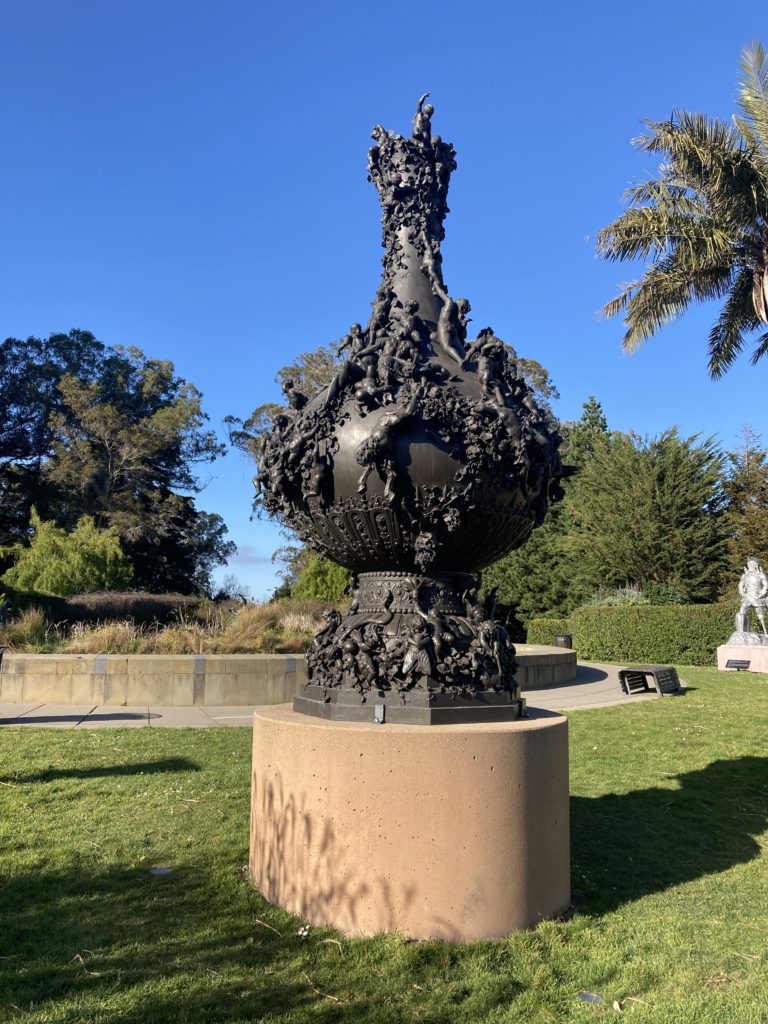
A little backstory. This piece was created by French illustrator and sculpture Gustove Doré for the 1878 Paris World’s Fair. From there it traveled to the Chicago World’s Fair of 1893, (which was the setting for novel “The Devil in the White City”). San Francisco, feeling a little insecure on the world stage, was anxious to prove that it could also host a fair. A lot of stuff from Chicago’s Fair was purchased and used for San Francisco’s 1894 Midwinter Fair, including Le Poeme de la Vigne.” Several years after the fair Michael DeYoung bought it.
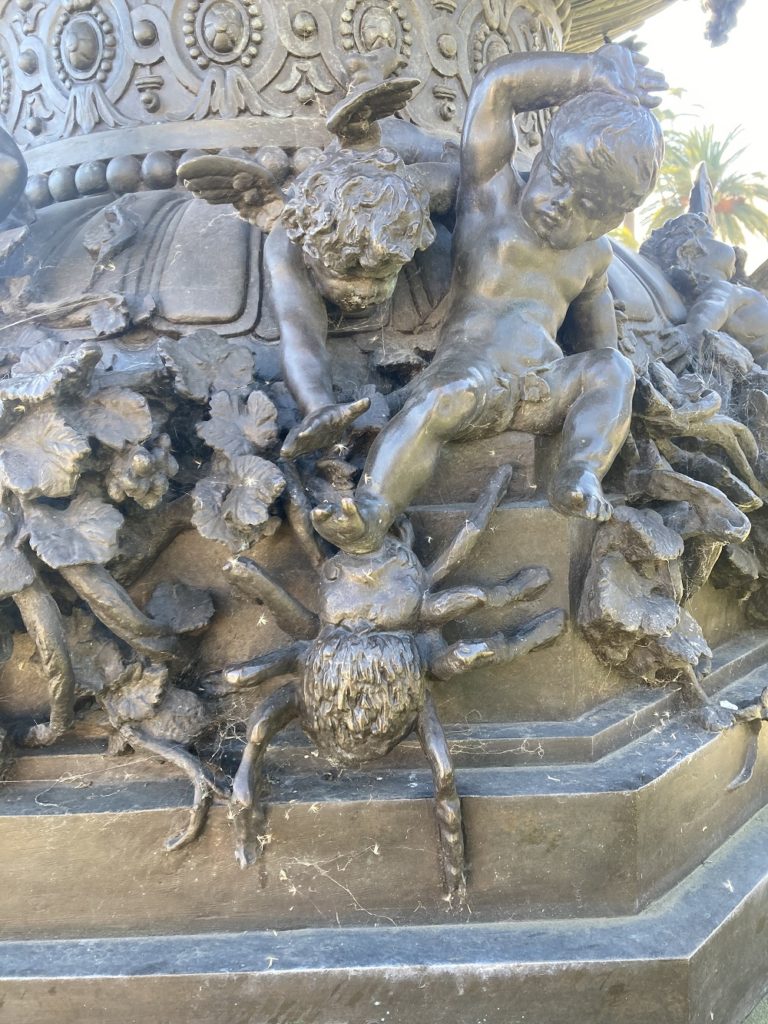
Starting from the base and going to the top, the sculpture is the story of wine. The best strangeness is at eye level. Here a small army of cherubs fight off a stunning variety of vermin and pests ready to attack the grapes and vines.
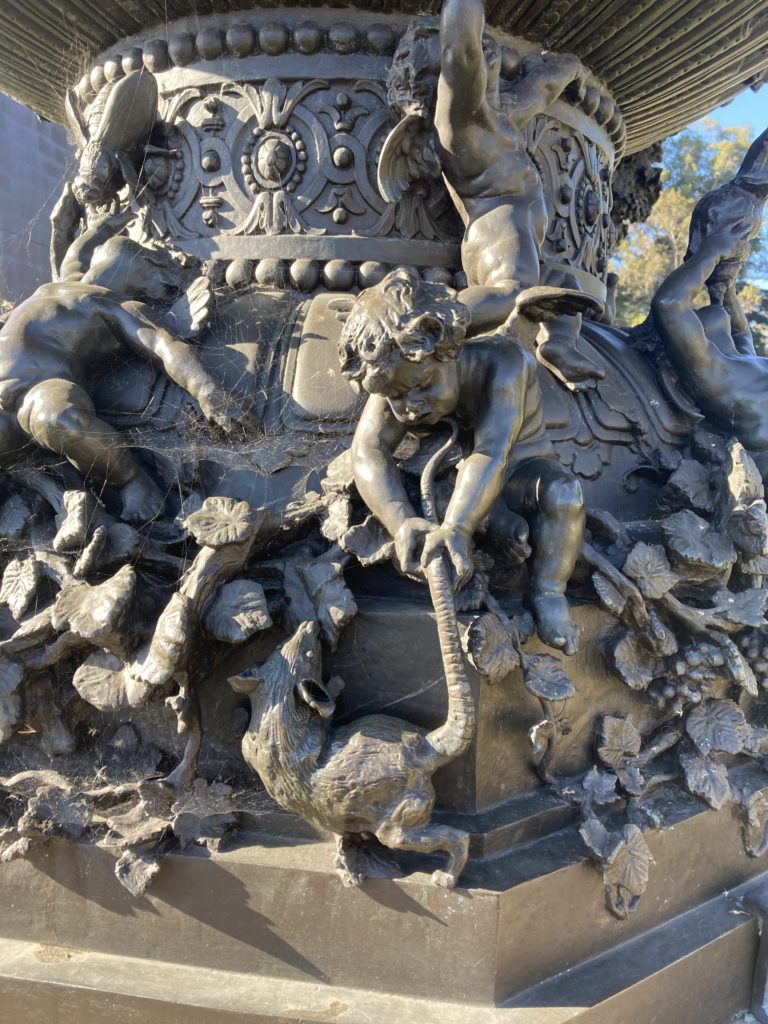
Armed only with chubby hands and fists, examples include one pulling the tail of a rat, another fending off a beetle, and another wrestles what may be a tarantula but is certainly a big spider, a spider as big as the cherub itself.
Just above the heroic putti is the harvesting of the grapes. Then fermentation, and at the top, indulgence of the efforts. If I had to battle a spider as big as myself, I’d need a drink too.
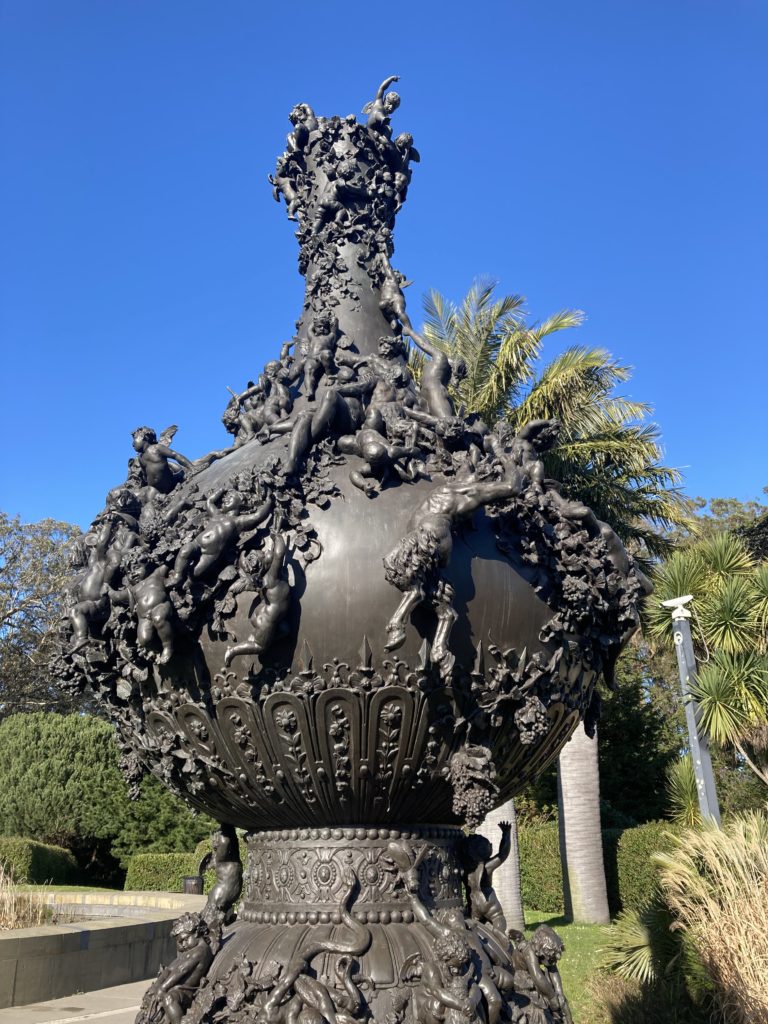
By the way, the sculpture across the road does not show a muscled man work a wine press. He’s crushing apples. Not nearly as much fun as wine.
Castro Theatre–A Grand Movie Palace
One of the questions I often get from my private tour guests is “What to do at night?” After a day of seeing the sites and having dinner, people often just go back to the hotel to crash and watch TV.
Instead of watching TV, why not go to the movies? And go to the movies in style.
The Castro Theatre is a rare experience. A gorgeous Art Deco movie palace, built in 1922 to not only show films but to lure people out of their homes to bask in ornate beauty for the price of a ticket. Few of these movie palaces exist anymore, and even fewer with a full Wurlitzer Theater organ, complete with silent film sound effects. The organ rises out of the floor and is played at night before most screenings.
The Castro screens an eclectic variety of films: second run, indy, foreign, vintage. There are also sing-alongs where lyrics are projected on the screen. Sing-a-long “Grease” and “Moana” are recent offerings,and every year their is the sing-a-long “Sound of Music.”
Visiting a city is about experiencing what you can’t back home. And I’m going to bet that your city doesn’t have a movie palace like the Castro. And if it does, go and compare our palace to yours.
If you’re staying downtown, getting to the Castro Theater couldn’t be easier on MUNI. 3 lines, the M, L, K/T underground trains go to the Castro District, so you never have to wait more than a couple of minutes, and the Castro street station is just across the street from the theatre. Getting back downtown is equally quick and easy.
Coit Tower-a gift of public space.
One of the reasons I love Coit Tower is that its purpose is public space. It doesn’t have what is generally considered a practical purpose, such as a conduit for commerce or a city building for storage or business. It was built with seed money from Lily Coit who left a third of her estate to San Francisco “to be expended in an appropriate manner for the purpose of adding to the beauty of the city which I have always loved.” Coit Tower has much to offer the visitor. 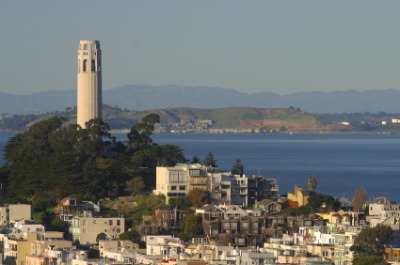 From the parking lot, there are views of the Golden Gate Bridge, Russian Hill, and Alcartaz. Inside the tower are murals from the 1930’s PWA project.
From the parking lot, there are views of the Golden Gate Bridge, Russian Hill, and Alcartaz. Inside the tower are murals from the 1930’s PWA project. 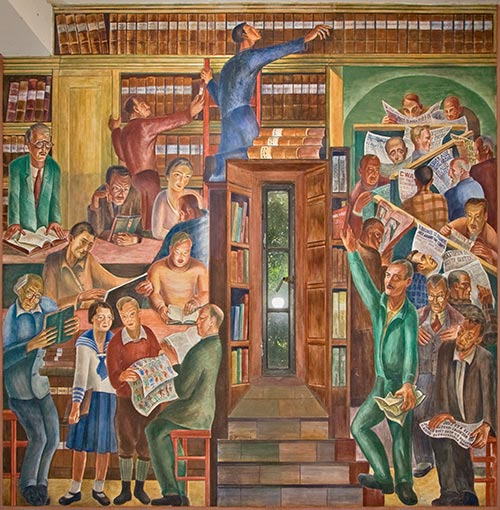
Here’s an insider tip: if you need a bathroom, there are art deco toilets inside don’t stand in line at the toiler kiosk outside. All are free.
A $7 elevator ride takes you 15 stories above the city. 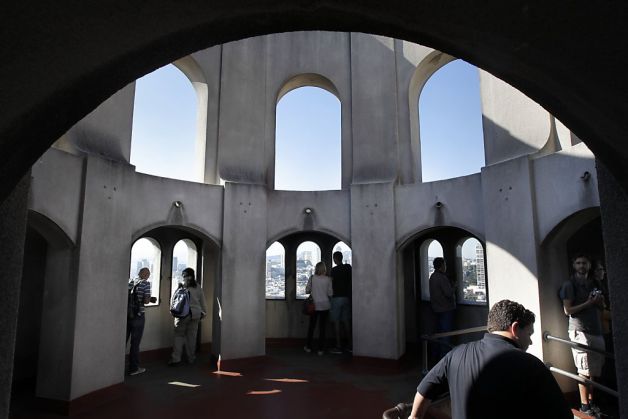
The line to get up to the top can be long and daunting, especially during holidays, summer, and weekends. Either go early or later in the day to avoid what can be a 45 minute wait. Getting down from the top can be difficult as well, as the elevator only holds 7 people.
If you don’t get out and go inside while on your private tour in the convertible MINI Cooper, you should make it part of your day when you visit North Beach. After coffee in the the morning, take one of the many staircases on the Western (North Beach) side up to the tower. Then take another staircase back down to North Beach for lunch and a glass of wine.
To see more murals, across the city, with a view of the Pacific Ocean is the Beach Chalet.
A must see for Star Wars fans–and you can’t see it from a big bus
I have learned that it is impossible to tell a Star Wars fan just be observation. Sure, there are those who proudly display their fandom with t-shirt and hats, but most big fans don’t announce it. So I ask my guests how big a Star Wars fan they are. Some may not have a personal light saber, at least on them at the moment, but a fan is glad to announce their loyalty. And if they are a fan I make it a point to take them to Star Wars treasures.
George Lucas’ digital empire—The Letterman Digital Arts center, which includes Industrial Light and Magic and Lucas Film is located in the Presidio. The LDA center doesn’t offer tours of any kind, but they do not leave fans without a reason to drop by.
In the courtyard of the complex is a statue of Yoda, which is available for a photo op 7 days a week. If you’re in town Monday through Friday during business hours, visitors are welcome to come into the lobby. On display are a collection of Star Wars memorabilia, including a life size Boba Fett and Darth Vader costume.
Big buses are not allowed in the Presideo. Vans are not allowed to pull up in the parking lot. But a custom private tour in the convertible MINI cooper can go everywhere, even right up to the Star Wars treasure house.
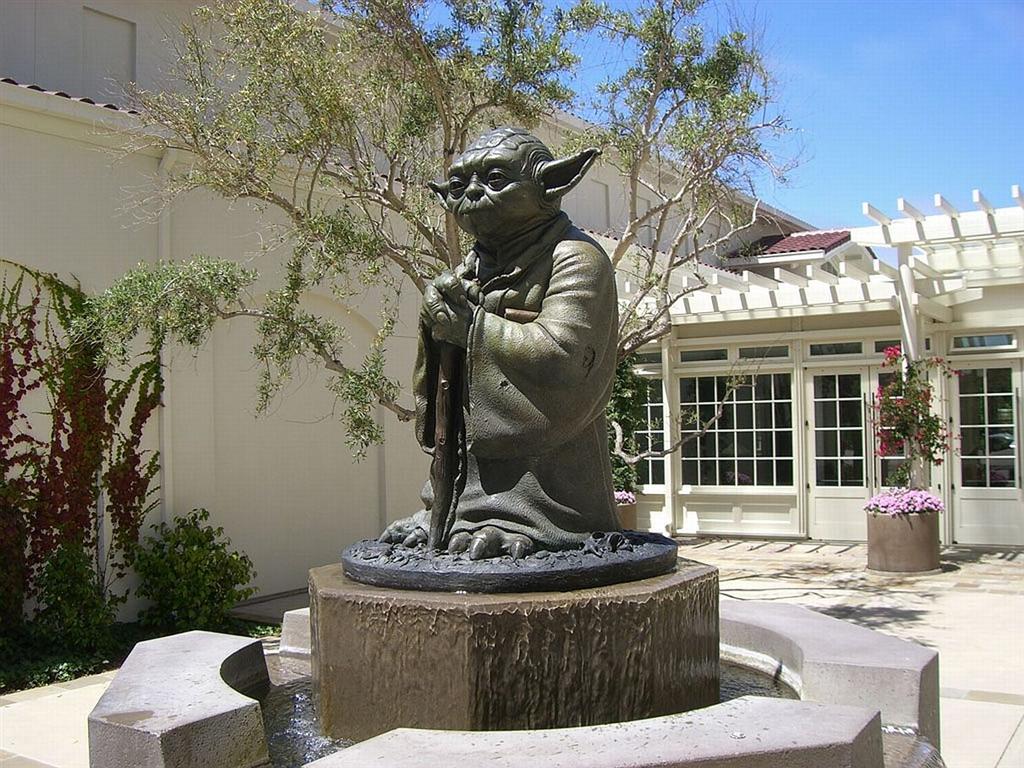

The 16th Ave tiled steps — beautiful views, beautiful mosaic, and off the usual tourist path
Since January of 2003, neighborhood volunteers and artists have transformed a drab western hillside staircase into a beautiful and inspiring creation of public art. It was, and continues to be a community project, bringing over 300 people together to enhance this neighborhood. Each of the 163 steps are decorated with a tile mural. Though the city had little to do with the stairs, other than giving permission, a stipend, and staying out of the way, since they are on city property they are for the enjoyment of everybody.
But appreciating the beauty of the tiles is just part of the fun. Climb the stairs and there you get an amazing view of the Pacific Ocean few visitors experience.
Big Tour buses are not allowed in the neighborhood, and it is located just far enough away from Golden Gate Park that few people bother to make the trek to discover the 16th Ave. steps. But for the adventurous willing to walk the 10 blocks it is worth it, and will be one of those experiences to brag about back home. Of course, if you don’t want to walk, I can take you there on a custom private tour as well.
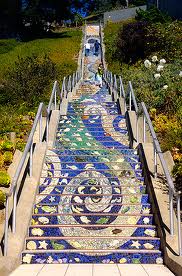
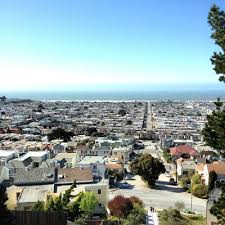
The Audium–a true “only in San Francisco” experience
From the beginner traveler adverse to public transpiration to the seasoned globetrotter who will quickly turn up their nose at any site, attraction or event that has popular recognition, thinking, falsely, that only the obscure and unheard of offers a true experience of a city, a common manta is to find the “only in (fill in city here)” experience. In San Francisco there is a reason the usual attractions, such as the Golden Gate Bridge and Coit Tower are worth the time and effort to seek out. Every city has singular landmarks (ie, the Eiffel Tower, the Roman Colosseum) that deserve the time and annoyance of dealing with crowds.
But everyone wants to find those truly unique and sometimes odd experiences and sites. Some make more of an effort to find them than others, but even those travelers who check off a list of greatest hits would accept an invitation to something “only in—-”
That’s why you should visit the Audium. There is nothing like it anywhere else. There. I’ve told you about it. Now go.
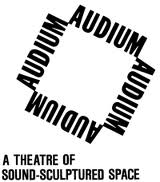
You sit in a room surrounded by 176 speakers. The lights go out, and in the pitch dark you are immersed in audio compositions consisting of music, and sounds both natural and man made. The complex orchestrations use the speakers as another instrument to give the sounds direction and motion. You could hear birds flying across the room, while violins are first playing to your sides, then overhead, accompanied by the thrum of machinery or the ticking of clocks.
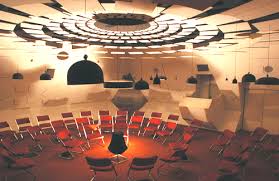
To describe it does not do it justice. The Audium must be experienced. There are only three shows a week, every Thursday, Friday and Saturday at 8:30. Doors are at 8pm, and it good to arrive no later than 8:15. Some tickets are usually available at the box office and are $20, cash only. As the shows often sell out it is recommended that you get advance tickets at City Box Office.
The performance lasts about an hour, so if you don’t like it you haven’t blown your whole evening. But you’ll like it.
So go. Not only will it be nothing like you’ve done before, you will have experienced something that you cannot experience anywhere else.
San Francisco’s Original Shoreline
When I take people out on a private tour, the guests always comment on the hills. But the city isn’t all hills. A rule of thumb is “Because we have 47 hills, if something is flat, it must be landfill.”
What is San Francisco didn’t used to be San Francisco. We’re a small city; 7 miles by 7 miles (give or take.) The story of San Francisco always involves land: how to use what little we have, and how to make more of it.
This map shows the original shoreline. Soon after the Gold Rush in 1849, Yerba Buena Cove was filled in with thousands of abandoned ships. It took an average of 5 months to get here from where ever gold seekers came from, and they came from all over the world (except Japan because it was isolated at the time) and the during the journey all they could think of was that someone was in the gold country grabbing their gold. The ships were abandoned, scrapped, and with dredging bay and dirt from the hills and became the Financial District.
The Marina lies on top of once was a fresh water lagoon. It was filled in with dredging from the bay and some debris from the 1906 Earthquake and Fire. It was filled to to be the site for the 1915 World’s Fair.
So when you walk on two of flattest parts of San Francisco, you’re walking over the 2 major events in San Francisco history.
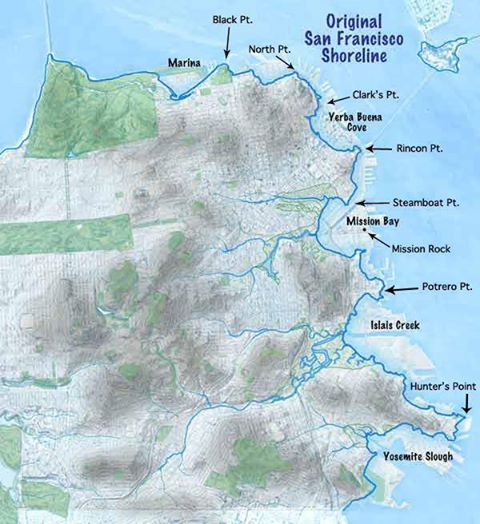
Inner Sunset—the hidden neighborhood next to museums in Golden Gate Park
Most visitors to San Francisco make it out to Golden Gate Park, at least the East end of it. Aside from being a beautiful place to stroll, this is where there are museums, gardens, and other sites worth seeing. The Conservatory of Flowers is a world famous example of Victorian greenhouse architecture (upper right corner of the map).
Nearby are the Academy of Sciences, the DeYoung Museum,
and Japanese Tea Garden, located around Music Concourse Dr.
But what remains unknown to most visitors is they are on the edge of neighborhood that has a lot of great restaurants and interesting shops. The Inner Sunset is just a 5 minute walk from the museums along Martin Luther King Jr. Dr. to 9th Ave.
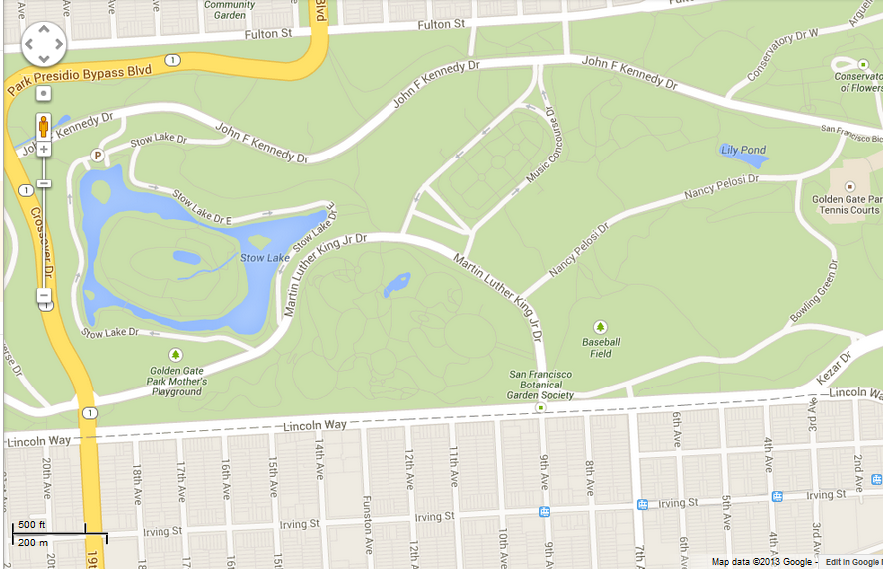
Along 9th Ave. you’ll find Misdirections (one of the few brick and mortar magic shops left), Ebisu (my favorite sushi restaurant), and Nopalito for traditional Mexican food. Turn left at Irving, and within a few blocks there is Amazing Fantasy comic books (8th Ave), Inner Fog (great wine bar, between 6th and 7th), the Crepevine (good and inexpensive food, especially for breakfast and lunch, between 7th and 8th) and several coffee shops. Turn right at 9th and Irving, and down the street (between 11th and 12th) is San Tung, where people line up for the Dry Fried Chicken Wings.
Those are just some of the places to discover in this neighborhood. And after you’re done exploring getting back downtown is a snap on the N Judah.
Macondry Lane–one of 670 public staircases in San Fransico
San Francisco has o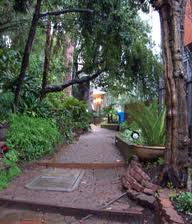 ver 670 staircases that are public walkways.
ver 670 staircases that are public walkways.
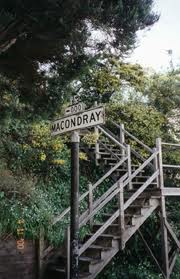
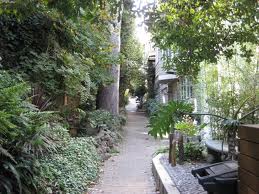
Some, like the imposing Filbert Street steps, are obviously open to everyone. But there are many staircases that appear as if they are private, such as being part of an apartment building or a walkway leading up to a house. Thus these public treasures, which make San Francisco the special place it is, are passed up or unnoticed by visitors and locals.
One of my favorite staircases is Macondry Lane. Tucked away on Russian Hill, it is a block long walkway with beautiful gardens and landscaping, and wonderful views of the Bay. Guests on Small Car Big Time Tours like to be dropped on at the Taylor St. stairs and get picked up on the other side at Jones.
This is a true San Francisco secret and not to be missed.
Ferry from Sausalito: view the city by the bay from the bay.
Riding a ferry from Sausalito is a popular way to end a tour. After seeing San Francisco, many guests like to cross the Golden Gate Bridge (even more spectacular in a convertible MINI), and spend a little time in quaint Sausalito, then ride a ferry back to the city. You get a view of San Francisco surprisingly too few guests experience.
There are 2 ferries. The Golden Gate Ferry drops you off at the Ferry Building, which is also something you should see. The Blue and Gold Ferry drops off at Pier 41, on Fisherman’s Wharf.
Many people bike to Sausalito, and ride on the ferry tired and sweaty. Fine–if that’s your thing. But the other option is to be driven to Sausalito in style, and dropped off in time for a stroll around Sausalito before getting on what has been called the #2 best ferry commute in the US. (And I don’t know what is #1. Reports vary. Suggestions?)
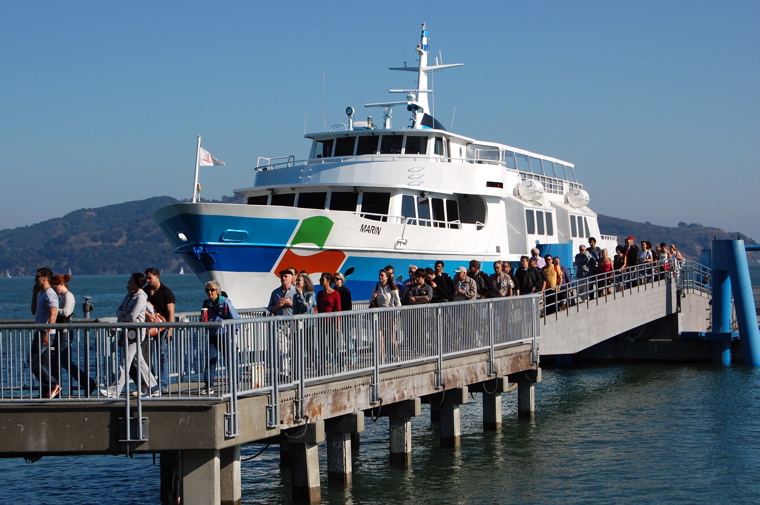
The Mission Murals in Balmy Alley
Block long Balmy Alley is one of the best places to see a collection of murals in San Francisco, and definitely off the usual tourist path. Located in the Mission District, these beautiful artworks contain many different styles and subjects.
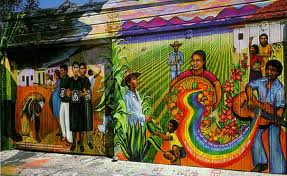
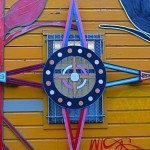
These are local treasures that even many people who live here don’t know about. So if you visit them, you might see the city better than a local. They are best viewed on foot. Or from a convertible MINI Cooper.
Balmy Alley is located off of 24th Street in The Mission. It is parallel to Treat Ave and Harrison Street between 24th & 25th streets.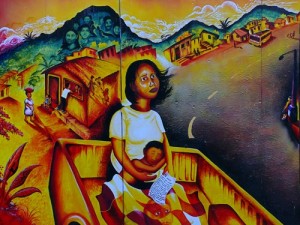
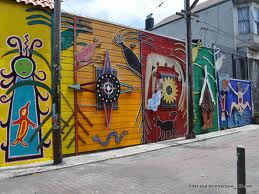
Storybook Houses of the Outer Sunset
The Outer Sunset is an area of San Francisco unknown to most visitors to the city. Even residents know little about it, other than it is boarded by the Pacific Ocean on the west, Golden Gate Park on the north, and is usually considered as being the blandest neighborhood in the city.
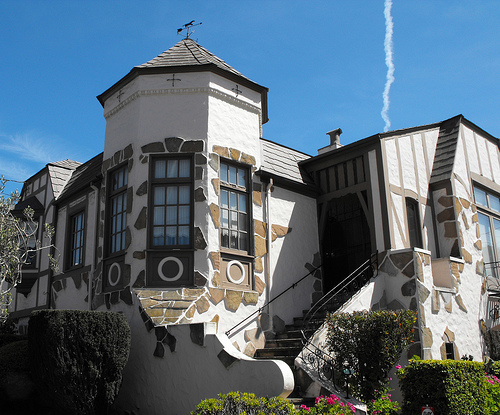 However bland most of the Sunset is, with rows and rows of look alike houses, there are gems. These quirky homes have a variety of fanciful facades, such as a Tudor, a Spanish style, and Parisian Art Nouveau.
However bland most of the Sunset is, with rows and rows of look alike houses, there are gems. These quirky homes have a variety of fanciful facades, such as a Tudor, a Spanish style, and Parisian Art Nouveau.
These are the inspired idea of architect and developer Oliver Rousseau. In the early 1930, he wanted to build homes for working class people that had a touch of whimsey and elegance. His ideas and designed were later copied by others.
The largest cluster of these storybook homes is along 33rd to 36th avenues between Kirkham and Lawton streets. If you’re in San Francisco and love architecture, you should make a point to venture out see an area that even most residents of the city are unfamiliar with. Big tour buses can’t take you there. But Small Car Big Time Tours can.
1 Kearny: A rooftop oasis, if you know how to find it
There are many POPOS (Privately Owned Publicly Occupied Space) in San Francisco. They include open plazas, indoor areas with tales and chairs, and, everyone’s favorite, rooftop gardens with great views.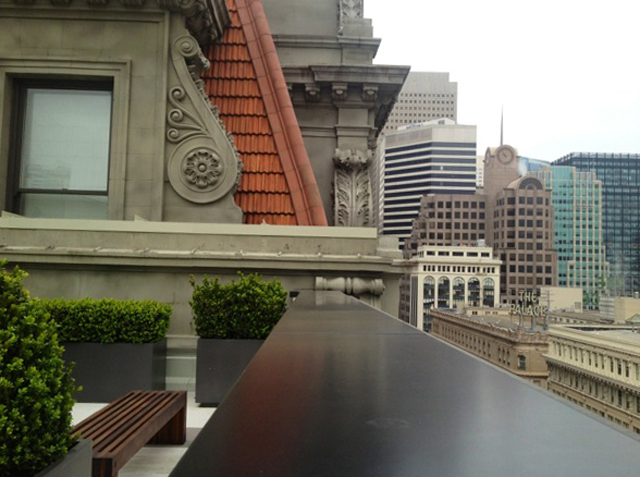
This is the view from 1 Kearny, a beautiful, and perhaps the least known rooftop POPO. It’s a bit of a chore finding it, but well worth the effort. Though the address is 1 Kearny, enter through the lobby on Geary St. Tell the security guard you want to go to the rooftop garden. Inside the elevator is the only sign that lets you know there is a POPO in the building. Go to the 11th floor. Chances are, you will have these great views all to yourself.
 If you are interested in discovering more POPOS, go the the SPUR website
If you are interested in discovering more POPOS, go the the SPUR website
http://www.spur.org/publications/library/report/secretsofsanfrancisco_010109
You can download a map, and get the APP, showing where all the POPOS in San Francisco are.
These are your spaces. Discover and enjoy them.
Tony’s Pizza–worth the wait
You know you’re in for some seriously good pizza when the front of the menu proclaims “Respect the Craft.”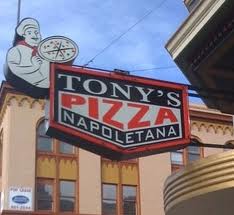 Tony is a real guy,11 time World Pizza Champion Tony Gemignani. It doesn’t take much searching on the web to find hundreds of raves, so I won’t go into a long review, other than to say my favorite is the Picante (found under Classic American.)
Tony is a real guy,11 time World Pizza Champion Tony Gemignani. It doesn’t take much searching on the web to find hundreds of raves, so I won’t go into a long review, other than to say my favorite is the Picante (found under Classic American.)
They don’t take reservations, so plan to wait either at the bar or somewhere else (they will take you cell phone number and call when your table is ready. Fortunately, since Tony’s is in the heart of North Beach (1570 Stockton at Union), there are a lot of bars and coffee shops nearby.
http://www.tonyspizzanapoletana.com/index.php
The Best Free View in Golden Gate park
Here’s a secret few people know about: the observation deck in tower of the De Young museum (in Golden Gate Park) is free, and open to the public during museum hours. Just tell museum staff you want to go into the tower, and they will direct you to the elevators, which take you up nine stories to the 360 degree glass enclosed observation deck. There are amazing views of the park, the Golden Gate Bridge, and western side of San Francisco—all without an admission fee.
Misdirections: one of the last brick and mortar magic shops
There used to be dozens of professional magic shops in the Bay Area. Now there is only one, but it’s a good one. Misdirections bills itself as “A Real Magic Shop for Real Magicians.” It is fully stocked with dvds, books, tricks, and supplies for the professional, but amateurs can easily find something they can perform with minimal skills. Located at 1236 9th Ave.in the Sunset District close to the Academy of Sciences and the Japanese Tea Garden, Misdirections is definitely worth a visit. Not only because it’s fun, but a real magic shop is a rare experience these days.

